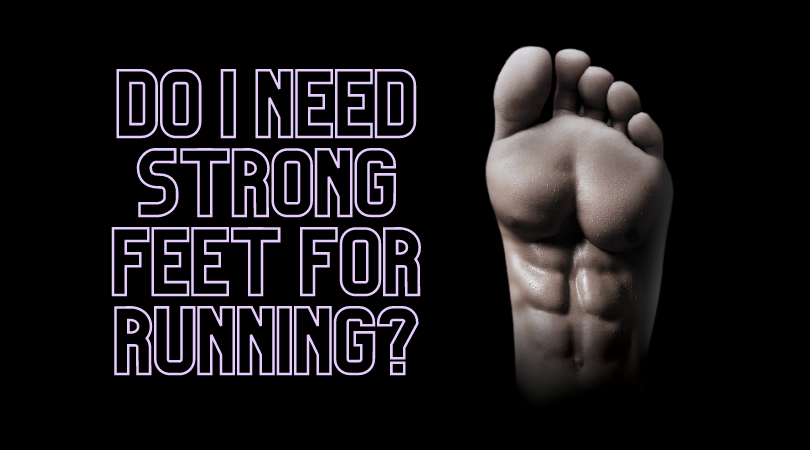Do I need strong feet for running?

Feet are often a neglected piece of the running puzzle. That is because they often hide away and are compensated by footwear. But how important is it to have strong feet for running? Does it reduce risk of injury? Let’s see what the evidence says.
The Foot Core System
An article published in 2014 introduced the concept of the ‘foot core system’ and argued that the foot core behaves such like the ‘core muscles’ in your back and stomach. They went on to say, that the foot core system is influenced by 3 sub-systems all interacting together to achieve strength & function. The active system includes the muscles, the passive system relies on the bones, and the neural system focuses on nerve receptors sending feedback to the rest of the body.

Foot strength & running injury
Surprisingly, no evidence has shown a link between flat feet and injury. Additionally, evidence has struggled to link foot strength & function with injury. I believe this is the case because we are missing one key piece. Individual running loads! Increasing foot function will help raise foot capacity and help the function of the entire kinetic chain, but we need to combine this with a well-structures training plan. Therefore, it can be very useful for runners to increase foot function, while training within their adaptation zone.
Exercises to develop strong feet for running:
It is important to note, if your foot is weak to start with the basics. Try some co-ordination exercises like toe yoga and built a foundation. Once this is built, progress to strength exercises in standing, single leg standing and jumping. Alternatively, one of the most effective ways to strengthen the feet is to walk barefoot. If you are able to tolerate these loads, wear minimalist footwear throughout the day, do your gym workouts in bare feet & utilize every moment you spend on your feet as an opportunity to build strength!
Beginner foot strength examples:
- Toe yoga
- Foot doming
- Calf raises with toe extension (photo 1 below)
- Intrinsic calf raises (photo 2 below)
- Isometric big toe flexion (photo 3 below)


